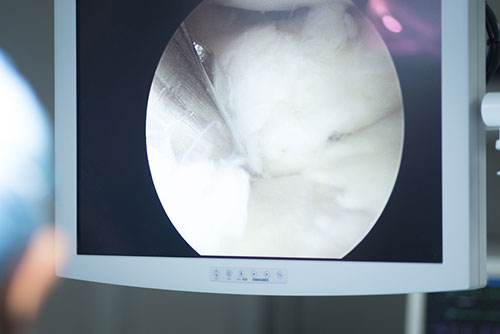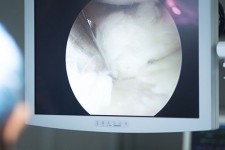
What do doctors turn to when x-rays leave some diagnostic questions unanswered? Arthroscopy. Arthroscopy is the procedure of diagnosing and treating damaged joints. In this procedure, the doctor will make a small incision and then will insert a tube with a fiber-optic video camera into it. As the tube is placed, the camera will provide a high-definition image of the inside of your joint. The benefit of arthroscopy is that your doctor can see inside your joint without having to make a large incision.
What is the purpose of arthroscopy?
Like the question we began with, doctors often turn to arthroscopy when x-rays or other images leave some diagnostic questions unanswered. Arthroscopy is most frequently used for joint issues impacting the knee, hip, wrist, shoulder, elbow, and ankle. Typically this procedure is performed because of loose bone fragments, damaged cartilage, inflamed joint linings, torn ligaments, and scarring within joints.
The risks
Complications with arthroscopy are rare and this procedure has become very standard. If you experience symptoms after your procedure, like increased pain, fever, swelling, numbness, oozing from the incision, call your doctor immediately. While uncommon, tissue or nerve damage, infection, and blood clots can be side effects.
Before the procedure
The extent of your preparations will depend on what joint you will have the procedure on. In general, you should avoid certain medications, fast beforehand, arrange for a ride, and wear loose clothing. Your doctor will provide you with specific instructions for your case.
The procedure
Arthroscopy is typically done in an outpatient setting, and the patient can be released the day of. Local, regional, and general anesthesia will be used and varies on the procedure type. In most cases, the procedure should not take long. You can expect about an hour or so. It is less invasive and intense than traditional surgery, which means there should be less discomfort and stiffness after the procedure.
After the procedure
For the safety and quickest recovery, you must follow your doctor’s orders when it comes to post-op care. Change your bandages, take medications, perform exercises, and attend follow-up appointments. These things will all be for your benefit.
A full recovery following arthroscopy can still take several weeks, but you should be able to return to work and light activity within a few days. Do keep in mind that not everyone’s recovery is the same and your rehabilitation may take longer than the next person.
Results
Your doctor will share the results of the procedure with you and may even share a written report. Your doctor will continue to schedule follow-up appointments with you to make sure that you’re progressing positively and not experiencing any problems.
Closing Thoughts
At Prairie Orthopaedic, our doctors offer arthroscopy with special care and attention in mind for the patient. Please know that we value your health and strive to provide you with the best care from check-in to check-out. If you would like to learn more about arthroscopy and our other services, please call Prairie Orthopaedic in Lincoln at .
References
Arthroscopy, Mayo Clinic;
Arthroscopy Mount Pleasant, SC, Southern Orthopedics & Sports Medicine

